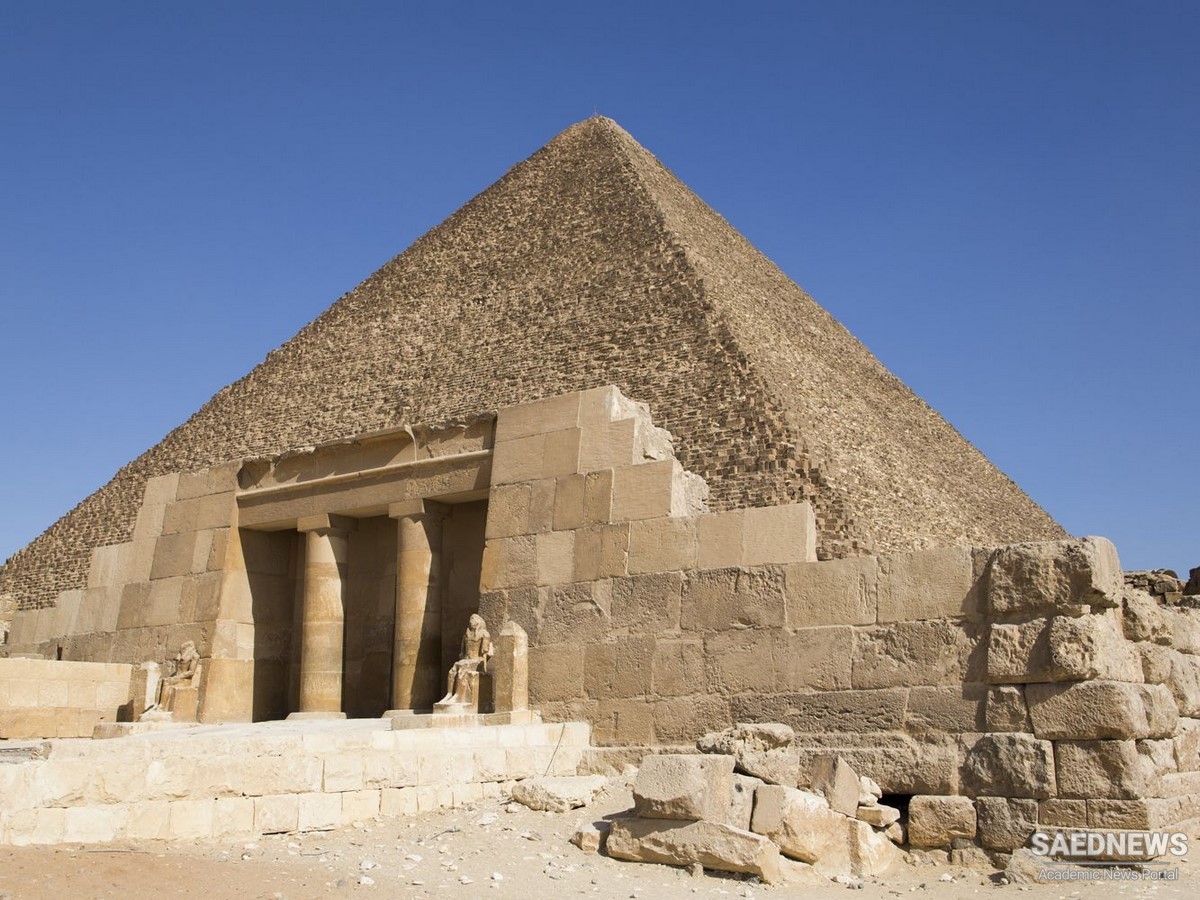Memphis and Thebes were great religious centres and palace complexes; they did not really progress beyond this to true urbanism. The absence of cities earlier was politically important, too. Egypt’s kings had not emerged, as Sumer’s had, as the ‘big men’ in a city-state community which originally deputed them to act for it. Nor were they simply men who like others were subject to gods who ruled all men, great or small. They were mediators between their subjects and unearthly powers. The tension of palace with temple was missing in Egypt, and when Egyptian kingship emerges it is unrivalled in its claims. The Pharaohs were to be gods, not servants of gods.
It was only under the New Kingdom that the title ‘pharaoh’ came to be applied personally to the king. Before that it indicated the king’s residence and his court. None the less, at a much earlier stage Egyptian monarchs already had the authority which was so to impress the ancient world. It is expressed in the exaggerated size with which they are depicted on the earliest monuments. This they inherited ultimately from prehistoric kings who had a special sanctity because of their power to assure prosperity through successful agriculture. Such powers are attributed to some African rainmaker-kings even today; in ancient Egypt they focused upon the Nile. The Pharaohs were believed to control its annual rise and fall: life itself, no less, to the riparian communities. The first rituals of Egyptian kingship known to us are concerned with fertility, irrigation and land reclamation. The earliest representations of Menes show him excavating a canal.
Under the Old Kingdom the idea appears that the king is the absolute lord of the land. Soon he is venerated as a descendant of the gods, the original lords of the land. He becomes a god, Horus, son of Osiris, and takes on the mighty and terrible attributes of the divine maker of order; the bodies of his enemies are depicted hanging in rows like dead gamebirds, or kneeling in supplication lest (like less fortunate enemies) their brains be ritually dashed out. Justice is ‘what Pharaoh loves’, evil ‘what Pharaoh hates’; he is divinely omniscient and so needs no code of law to guide him. Until the Middle Kingdom, only he had an afterlife to look forward to. Egypt, more than any other Bronze Age state, always stressed the incarnation of the god in the king, even when that idea was increasingly exposed by the realities of life in the New Kingdom and the coming of iron. Then, the disasters which befell Egypt at the hands of foreigners would make it impossible to continue to believe that Pharaoh was god of all the world.
But long before this the Egyptian state had acquired another institutional embodiment and armature, an elaborate and impressive hierarchy of bureaucrats. At its apex were viziers, provincial governors and senior officials who came mainly from the nobility; a few of the greatest among these were buried with a pomp rivalling that of the Pharaohs. Less eminent families provided the thousands of scribes needed to staff and service an elaborate government directed by the chief civil servants. The ethos of this bureaucracy can be sensed through the literary texts which list the virtues needed to succeed as a scribe: application to study, self-control, prudence, respect for superiors and scrupulous regard for the sanctity of weights, measures, landed property and legal forms. The scribes were trained in a special school at Thebes, where not only the traditional history and literature and command of various scripts were taught, but, it seems, surveying, architecture and accountancy also.
The bureaucracy directed a country most of whose inhabitants were peasants. They cannot have lived wholly comfortable lives, for they provided both the conscript labour for the great public works of the monarchy and the surplus upon which a noble class, the bureaucracy and a great religious establishment could subsist. Yet the land was rich and was increasingly mastered with irrigation techniques established in a pre-dynastic period (probably one of the earliest manifestations of the unsurpassed capacity to mobilize collective effort which was to be one of the hallmarks of Egyptian government). Vegetables, barley and emmer were the main crops of the fi elds laid out along the irrigation channels; the diet they made possible was supplemented by poultry, fi sh and game (all of which fi gure plentifully in Egyptian art). Cattle were in use for traction and ploughing at least as early as the Old Kingdom. With little change this agriculture remained the basis of life in Egypt until modern times; it was suffi cient to make her the granary of the Roman empire.


 Egypt: the Rise of a New Civilization
Egypt: the Rise of a New Civilization














































